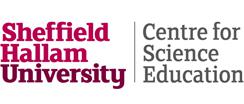Year 6: Light
This list consists of lesson plans, activities and video clips to support the teaching of light in year six. It contains tips on using the resources, suggestions for further use and background subject knowledge. Possible misconceptions are highlighted, so that teachers may plan lessons to facilitate correct conceptual understanding. Designed to support the new curriculum programme of study it aims to cover many of the requirements for knowledge and understanding and working scientifically. The statutory requirements are that children are taught to:
· recognise that light appears to travel in straight lines
· use the idea that light travels in straight lines to explain that objects are seen because they give out or reflect light into the eye
· explain that we see things because light travels from light sources to our eyes or from light sources to objects and then to our eyes
· use the idea that light travels in straight lines to explain why shadows have the same shape as the objects that cast them.
Visit the primary science webpage to access all lists.
Modelling Light
This video is a way of helping children understand that light travels in a straight line from a light source, reflects off an object, a mirror and then into the eye. This is modelled using a torch, teddy, mirror and ribbon to represent the light. The teacher discusses how modelling can address misconceptions and help children access an abstract concept.
Working in groups children could then build their own model and draw what is happening on a large sheet of paper.
Light
Contains a presentation which shows different sources of light, an activity which explores how we need light to see, sources of light, how we see objects, reflection of light and the composition of white light. The presentation is interspersed with class experiments, games and activities. The teachers' notes deal with the common misconceptions around light and show how the presentation and activities help address them.
Light: crime lab investigation
Session B helps children develop their understanding that light travels in straight lines and can be blocked by opaque objects. Allow children to design a test to see if different materials block light and produce shadows and if the resulting shadows differ depending on the material used. Include some translucent and transparent materials and note observations. A shadow is usually black because it is an absence of light however a coloured filter may change the shadow e.g. a red filter will let red light pass through it to produce a red shadow as the other colours of the spectrum are absorbed.
Making Shadows
This activity looks at how shadows are formed and what affects their size, direction and shape. Ask children to place an object at the centre of a sheet of paper, and use a torch to produce shadows of different length and direction. This activity demonstrates that light appears to travel in straight lines and that it is blocked by an opaque object. Children could change one factor and see what happens to the resulting shadows, e.g. the distance of the object from light source, distance of object from screen, and the angle at which the light source shines on object.
Periscopes
A periscope is a device that enables us to see over walls or round corners. This is because rays of light hit the mirror of the periscope and are reflected twice. The beam of light is reflected through 90 degrees, because the mirrors are at 45 degrees to the path of the light ray.
This template and instructions can be used to create periscopes. Children may then explore how they work and explain this.
Some children may enjoy the challenge of designing their own periscopes.
What factors affect the size of a shadow in a shadow theatre?
This resource provides a set of videos and a practical investigation aimed at supporting working scientifically in the classroom and relating science to real world experiences. In the first video Professor Brian Cox joins a teacher to find out how to set up and run an investigation to find out what affects the size of a shadow. Children use their own shadow puppets to investigate how the shadow size changes as they change the distance between light source and screen. Further videos show Brian Cox finding out more about how shadows are used in X-rays and talking about how eclipses occur.
The magic of light
Make your own spectroscopes and colour wheel to study the properties of light.
Year 6 - Starters for Science* Suitable for Home Learning*
Starters for science provides the key learning, key vocabulary and 4 easy to run activities for each topic in Y6. These sheets may be sent home, so children can carry on learning science whilst self-isolating, or they can be used in class. There are further sheets for other year groups here.
How do we see things? Understanding light
This resource covers the parts of the eye and their function in enabling people to see objects. They are designed for teachers working with pupils who are new to English. The resources include a set of flashcards covering the key words and a series of worksheets including an eye diagram to label and differentiated dictogloss activities which help pupils develop their speaking, listening, reading and writing skills.









